Research, editing : Gan Yung Chyan, KUCINTA SETIA
News on CCP, Japan, disease control
News (1) to (3) / Reporter : Zhou Guihang / Editor : Lin Qing / https://www.ntdtv.com/b5/2023/08/26/a103773934.html
News (1)
CCP hypes up Japanese nuclear wastewater, netizens lament: China's fishery and seafood industry is about to end
Image : In August 2023, a sushi restaurant in China began to "reject Japanese aquatic products". (Web image)
The Chinese Communist Party (CCP) hyped up the so-called "threat of Japanese nuclear wastewater" and instigated a boycott of Japanese seafood, endangering the entire seafood catering industry and affecting the Chinese fishery. Commentators pointed out that the political campaign launched by the CCP will severely damage the recession-hit Chinese economy.
The CCP ordered a complete ban on the import of Japanese aquatic products, and hyped up the "threat of Japanese nuclear wastewater", setting off a vigorous anti-Japanese movement in many places.

Image : The "Anti-Japanese Parade" led by the CCP's Jiangyin City officials. (Web image)
This campaign not only triggered a "salt rush" that swept across the country, disrupted the market, but also endangered many industries in China.
After the CCP issued the ban, many places began to check and remove Japanese seafood from Japanese restaurants and supermarkets, and coerced the catering industry to launch a "boycott Japanese seafood" campaign. As a result, not only a large number of Japanese restaurants have been hit hard, but also more related industrial chains, including Chinese fisheries.

Image : CCP officials inspected Japanese aquatic products in restaurants. (Web image)

(Web image)
Some Fujianese begged on the Internet, asking everyone not to boycott Japanese eel rice, because "more than 90% of the eels in Japan are raised by Fujianese."
(Web image)
Another Shandong netizen posted news that all seafood was boycotted because the authorities hyped that "sea water was polluted by Japanese nuclear weapons."
The netizen lamented, "The greater harm is behind, the seaside is no longer the original romantic tourist destination, and seafood will disappear from the dining table." "The next life will undergo earth-shaking changes."
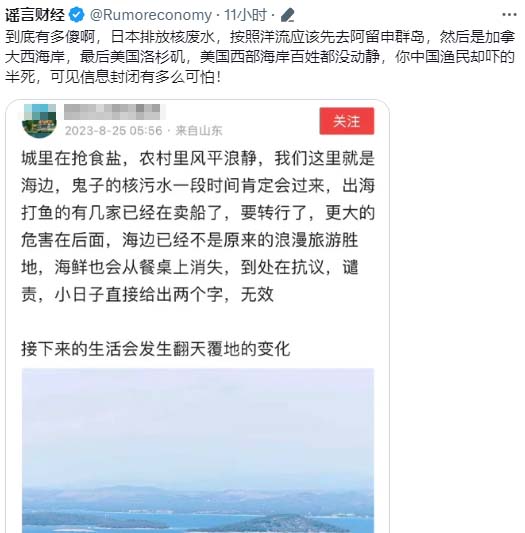
(Web image)
Some Chinese netizens posted that many Douyin anchors have removed all seafood, not only Japanese seafood. An anchor who was still selling Norwegian salmon a few days ago now stated that he "supports national policies and does not cheat or harm others."
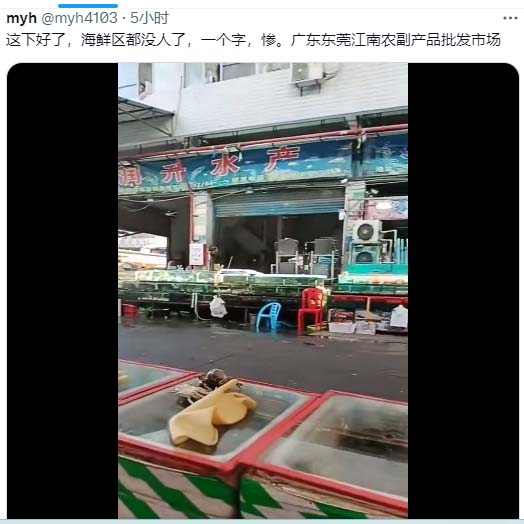
(Twitter screenshot)
The post said that it is estimated that public opinion will continue to ferment for a while, which will lead to a recession in China's fishery industry, and China is also a big fishery country. Suffering together", "Chunchun is another classic case of 'Chinese people only cheat Chinese people'".
Dayu, the anchor of the self-media program "Dayu News Insider", posted on X (formerly Twitter), "The whole people banned the import of Japanese aquatic products. Who is it hurting? Compared with the Japanese government's full efforts to subsidize and protect the aquatic industry, and the CCP's aggressive measures for Chinese aquatic products." Are there any subsidies for exports and restaurants? Sushi restaurants in mainland China may face closure again. This wave of operations is because the domestic economy is too good, so you plan to sprinkle salt on the wound?"
(Twitter screenshot)
A post by a Chinese netizen seems to imply the internal reason why the CCP instigates the anti-Japanese sentiment: China’s economic depression is coming, and the CCP needs to continuously launch political campaigns to maintain its rule.

(Web image)
News (2)
The CCP’s hype is accused of turning black and white
Approved by the International Atomic Energy Agency (IAEA), Japan began to discharge 1.34 million tons of nuclear wastewater accumulated after the Fukushima Daiichi Nuclear Power Plant was destroyed by the tsunami in 2011 into the sea from Thursday (24 August 2023), and it is expected that the discharge will be completed within 30 years.
Before discharge, nuclear wastewater will be harmlessly treated by polynuclear species removal equipment (ALPS), and the unremovable tritium will be diluted to 1500Bq/L by seawater (becquerel per liter, becquerel can also be referred to as becquerel) , this concentration is less than 1/40 of the regulatory standard value and less than 1/7 of the WHO drinking water standard. It is estimated that the total annual tritium emission is about 22 trillion (trillion) Bakers.
In July 2023, the International Atomic Energy Agency concluded in a related comprehensive report that "the impact on people and the environment is negligible" and "the cross-border impact is negligible". The agency's panel of experts, which includes a Chinese expert and a South Korean expert, has signed on.
News (3)
CCP China nuclear power plants discharge more tritium into the sea more than Japan
Prior to this, nuclear power plants in many countries around the world have discharged nuclear wastewater into the sea, including dozens of nuclear power plants along the coast of China.
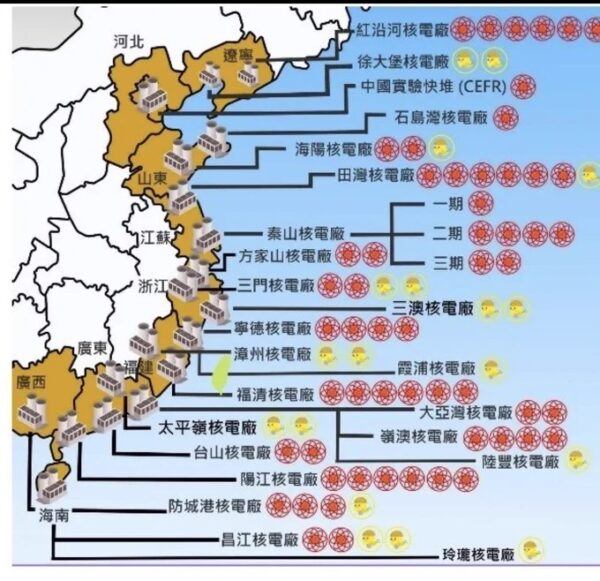
(Web image)
In response to the CCP’s accusations, the Japanese Embassy in China posted on its official Twitter account that the annual tritium emissions from just one nuclear power plant in China are several times, or even nearly 10 times, the emissions from the Fukushima plan.
The data quoted in the "China Nuclear Energy Yearbook" and enterprise reports in the tweet chart indicated that in 2021, the liquid tritium discharge of China's Taishan Nuclear Power Plant will be 218 MB, the annual discharge of Yangjiang Nuclear Power Plant will be 112 MB, and the discharge of Ningde Nuclear Power Plant will be 102 MB. The discharge of Yanhe nuclear power plant is 90 MB.
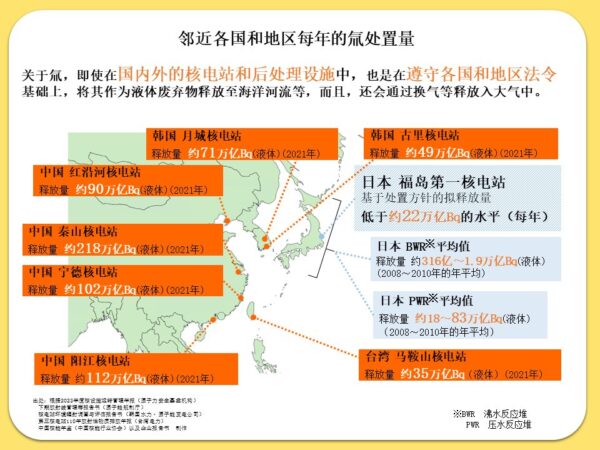
(Official Twitter image of the Japanese Embassy in China)
For the CCP’s hype, many Chinese people do not buy it. Netizens searched the "China Nuclear Energy Yearbook" published by the China Nuclear Energy Industry Association and many official documents, and found more annual tritium emissions data from China's nuclear power plants, many of which are far higher than the annual emissions of Japan's Fukushima project. quantity.
(Web image)
There are also Chinese netizens who have found more relevant official documents. Among them, an official notice in 2007 approved the Taishan Third Nuclear Power Plant to increase the control value of the radioactive concentration of nuclear wastewater from 370Bq/l to 3700Bq/l.
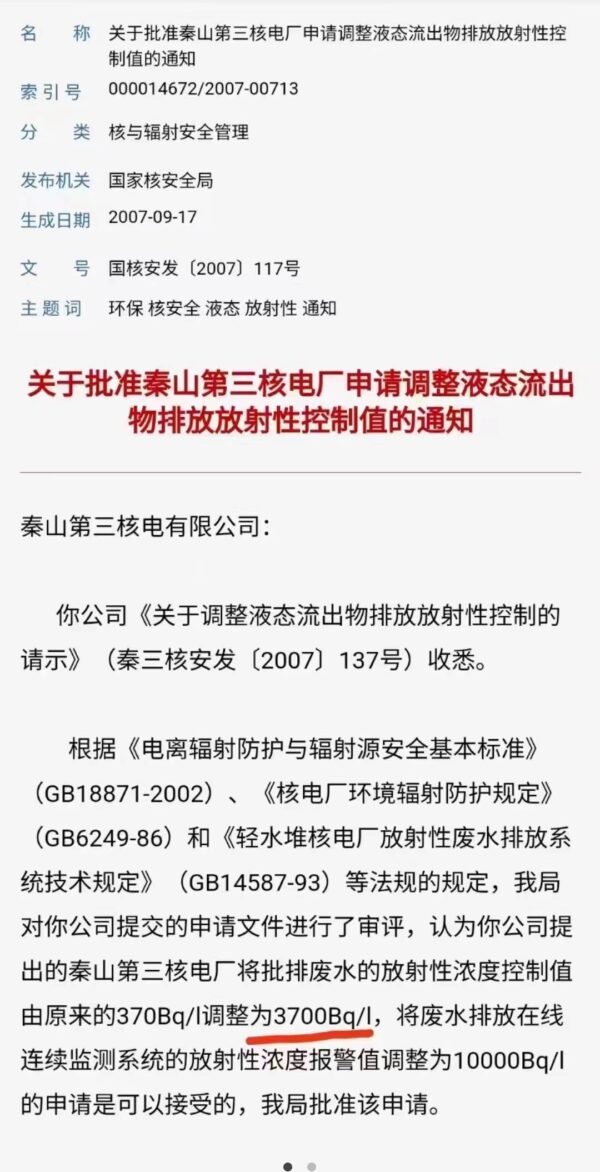
(Webpage Screenshot)
However, when the CCP hyped up the "threat of Japanese nuclear wastewater", most of the official documents dug up by netizens were quickly deleted.
At the same time, the screenshots of the documents forwarded by netizens, as well as the popular science post "Japan's nuclear wastewater is not a big threat", also quickly disappeared.
News (4)
Study: Paper straws contain toxic chemicals, are worse for the environment
Reporter : Li Zhaoxi / Editor : Lin Qing / https://www.ntdtv.com/gb/2023/08/26/a103773934.html /Image : Paper straws are served in cocktails at Wipeout Bar & Grill in San Francisco, California, on 21 June 2018. (Justin Sullivan/Getty Images)

Paper straws may not be the "environmentally friendly" straws advertised, Belgian researchers have found that these so-called "green" utensils contain toxic "permanent chemicals" and may cause more serious impact on the environment than plastic straws.
Cities across the United States have banned the use of single-use plastic straws, and the New York City Council passed a bill to prevent New York restaurants from providing plastic straws. Meanwhile, countries such as Belgium and the UK have also ditched these tools in favour of "greener" plant-based alternatives.
A recent study found per- and polyfluoroalkyl substances (PFAS) in plant-based straws in the US. Dr Thimo Groffen, an environmental scientist at the University of Antwerp in Belgium, and colleagues wanted to see if the same was true for products sold in Belgium.
These so-called eco-friendly straws contain more PFAS than plastic straws, according to a new study they published in the journal Food Additives & Contaminants.
"Straws made from plant materials such as paper and bamboo are often promoted as being more sustainable and environmentally friendly than straws made from plastic," Dr. Groffin, an author of the study, said in a statement.
Groffin added that the permanent chemicals PFAS present in paper straws take hundreds of years to decompose, meaning they're not really environmentally friendly.
The researchers analyzed the perfluoroalkoxy (PFA) concentrations of 39 brands of straws made of five materials: paper, bamboo, glass, stainless steel and plastic.
The straws, mainly from shops, supermarkets and fast food restaurants, underwent two rounds of PFAS testing. The researchers found that the majority of brands (27/39, 69%) contained PFAS, with a total of 18 different PFAS detected.
Paper straws have the highest levels of PFAS, with up to 90% of paper straws containing these chemicals. Meanwhile, bamboo straws, another highly regarded green alternative, came in second with 80 percent, followed by plastic straws (75 percent), glass straws (40 percent), steel straws (0) .
Among the PFAS, the most common are perfluoroalkoxy (PFA), which have been banned globally since 2020. However, the substance is still produced in some countries and may be present in products purchased by U.S. consumers.
Also, there is trifluoroacetic acid and trifluoromethanesulfonic acid, which are easily soluble in water, which means they have the potential to leach from the straw into the drink.
Groffin cautions that the presence of PFAS in paper and bamboo straws suggests they are not necessarily biodegradable. Not to mention that some of these so-called "100% recyclable" straws are not.
Fortunately, low concentrations of PFAS are unlikely to pose serious health risks. However, animal studies have shown that the buildup of these chemicals over time can lead to a range of dire side effects, including liver damage, weakened immune systems, underweight babies, and even infant death.
Because animal studies have used high concentrations of PFA, its long-term effects in humans are unknown. Given the absence of any PFAS detected in stainless steel straws, consumers are advised to use this type of straw, or avoid straws altogether, the researchers suggest.
News (5)
Study: China's sudden end to "dynamic zeroing" may have killed nearly 2 million people
Editor : Li Li / https://www.ntdtv.com/gb/2023/08/25/a103773506.html / Image : A health worker takes a swab sample from a reporter for testing for covid in Beijing, 3 March 2023 (Noel Celis/AFP via Getty Images)
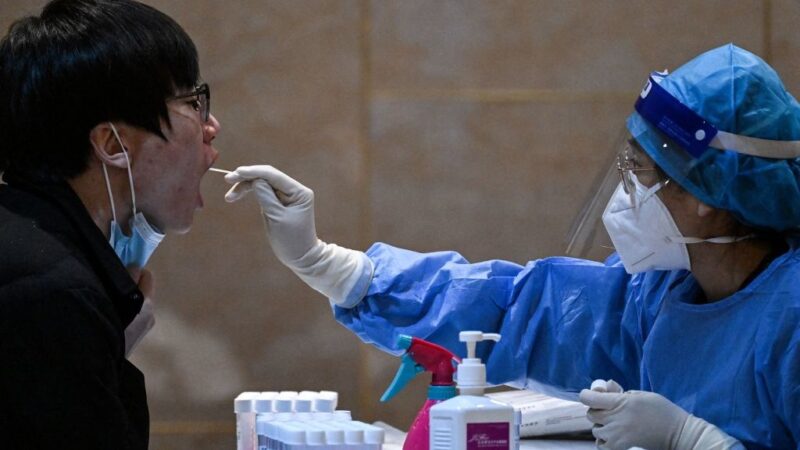
Recently, an American research institute calculated based on some public data from mainland China that the death toll in mainland China reached nearly 2 million, far higher than the death toll officially announced by the CCP.
On 25 August 2023, according to the US media NBCNews, the Fred Hutchinson Cancer Research Center in Seattle, Washington published a research report on Thursday (24 August 2023. From December 2022 to January 2023, 1.87 million people over the age of 30 died due to various causes. Deaths, mainly among the elderly, have been observed in all provinces in mainland China except Tibet.
The study was based on publicly released obituaries from three Chinese universities, as well as searches for words such as "cremation" and "burial" on Baidu, a mainland Chinese search engine.
"Our study of excess deaths associated with the lifting of the 'zeroing' policy in China sets an empirically derived baseline estimate. These findings have important implications for understanding the impact of COVID-19 on population, its sudden spread in the population and how it affects population mortality."
This figure of 1.87 million is far higher than the official data released by the Chinese Communist Party, which stated that from the beginning of December 2022 to 12 January 2023, about 60,000 deaths related to the covid virus were recorded in medical institutions.
The results of this study are also consistent with the estimates of other researchers. A study by Zhanwei Du of the University of Hong Kong and Lauren Ancel Meyers of the University of Texas at Austin found that since December 16 last year, covid may have killed more than 1.4 million people in China.
Jin Dongyan, a virologist at the University of Hong Kong, said that based on the research so far, this study is indeed closer to the actual data than the official data released by the Chinese Communist Party. King added that the way the study estimated the data was not "scientifically rigorous," but was still an "objective" and "helpful" attempt.
King said the actual figure could be several percentage points lower or higher than the study's estimate. The university employees used as the study's benchmark were mostly urban-dwelling intellectuals who may be characterized by a greater sense of self-preparation, higher vaccination rates and easier access to medical resources, King said.
This may be offset by the fact that they may also be more likely than normal to have underlying health problems, King added.
The findings were published Thursday in JAMA Online Open.
In December 2022, the CCP’s sudden and strict “dynamic clearing” policy led to a surge in the number of infections, overcrowded hospitals, and long queues at funeral parlors. Experts say satellite imagery shows increased activity in crematoria and funeral homes in mainland China. Therefore, the outside world has always suspected that the official death toll announced by the CCP is far lower than the actual death toll. However, due to the CCP’s consistent concealment of data, the outside world cannot know the real number of deaths.
On 16 February 2023, the "New York Times" quoted relevant experts and pointed out that the official death toll announced by the CCP is far lower than the actual death toll. Infected people with kidney or heart failure, and those who died outside the hospital were also excluded.
In July 2023, the Civil Affairs Department of Zhejiang Province briefly released a set of data on its official website, showing that the number of cremated remains in the first quarter of this year was 171,000, a year-on-year increase of 72.7%. It aroused concern and heated discussions, but the relevant data was subsequently deleted from the Internet by the department.
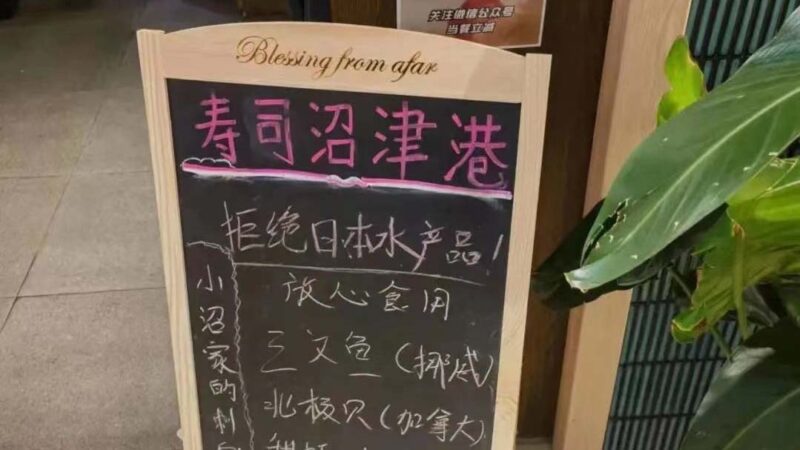
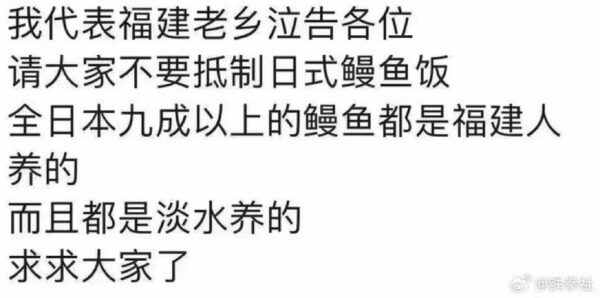
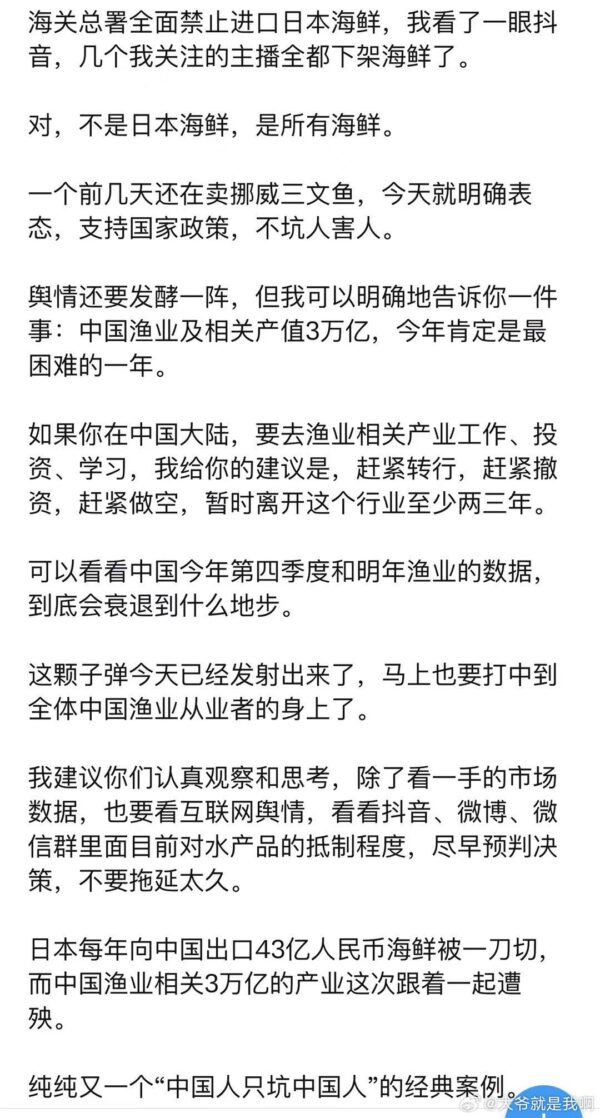


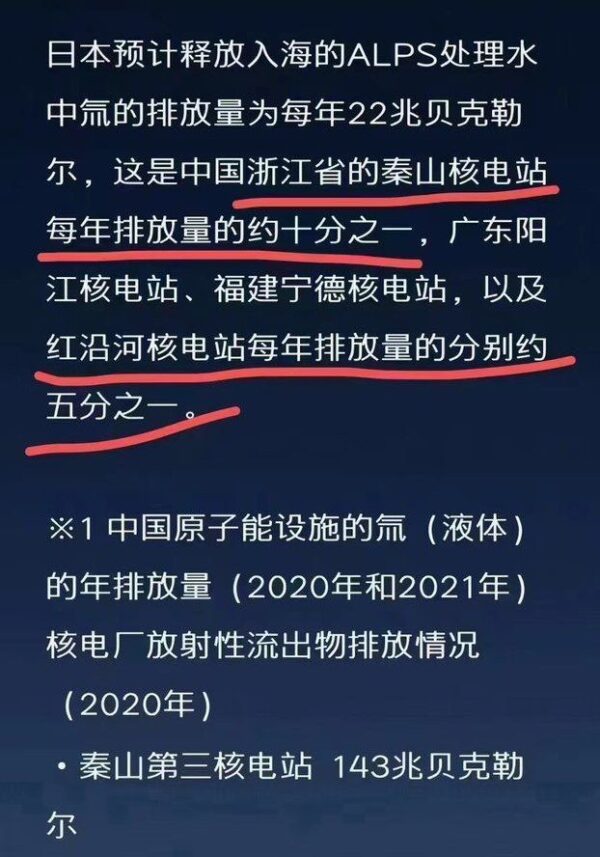
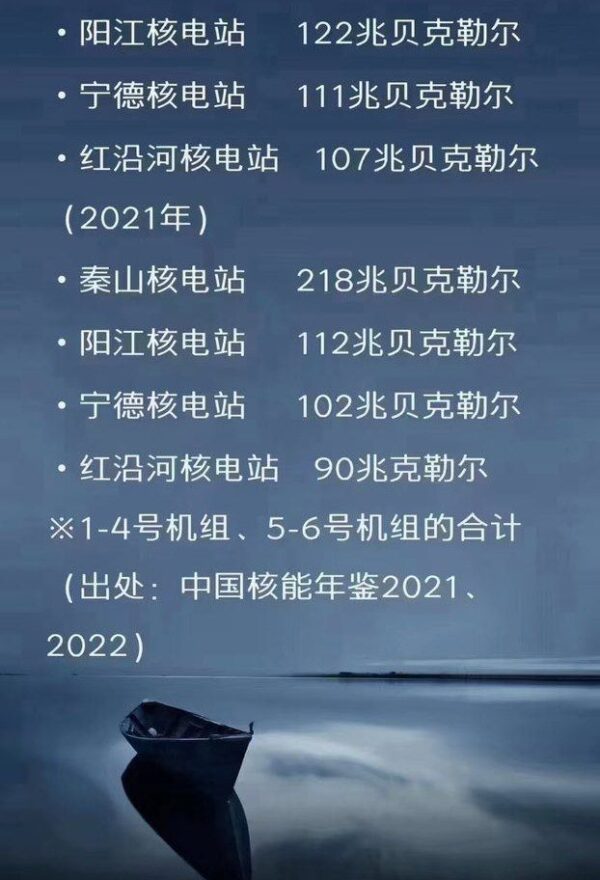



No comments:
Post a Comment